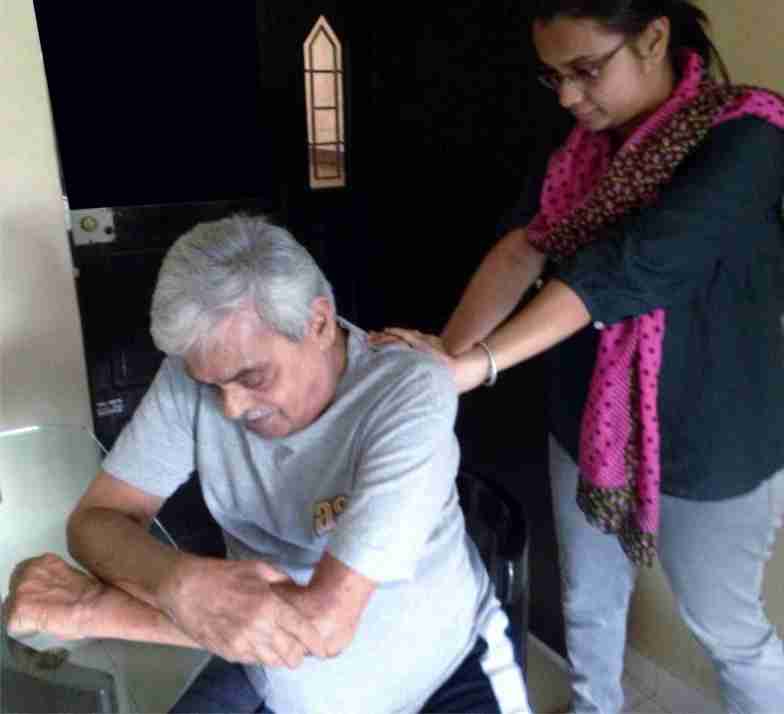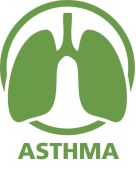Asthma: Symptoms and Treatment
Asthma or Bronchial Asthma is a chronic lung disease that affects the airways in the lungs (used to carry air to and from the lungs). If you have asthma, the airways can become inflamed and narrowed (bronchial hyperreactivity and respiratory obstruction). Asthma symptoms are marked by wheezing, chest tightness, cough and shortness of breath. While we attempt to understand what is asthma, one should know that it is a serious lung disease that can be controlled with proper asthma treatment. Asthma affects people of all ages and often starts during childhood.
Asthma Symptoms
Asthma symptoms result from ongoing inflammation (swelling) that makes the airways very sensitive and narrower than normal. The symptoms of asthma are different for different people. These symptoms and their frequency can also change.
Signs and symptoms of asthma include:
- Coughing from asthma is often worse at night, making it hard to sleep. Sometimes coughing brings up mucus.
- Wheezing causes a whistling sound when you exhale
- Chest tightness. This can feel like something is squeezing or sitting on your chest.
- Shortness of breath. Some people say they can’t catch their breath, or they feel out of breath— like they can’t get enough air out of their lungs causing shortness of breath
While other conditions can cause symptoms similar to that of asthma, the pattern of symptoms in asthmatic people usually has the following characteristics.
- They start or get worse with viral infections, such as a cold.
- They are triggered by exercise, allergies, cold air, or hyperventilation from laughing or crying.
- They come and go over time or within the same day.
- They are worse at night or in the morning
Asthma attacks, or asthma exacerbations, are episodes that occur when symptoms get much worse. These can come on gradually or suddenly and may be life-threatening. People who have severe asthma often get asthma attacks more often.
Asthma Causes
What are the causes of Asthma?
The exact cause of asthma is unknown, and the causes may vary from person to person. However, asthma is often the result of a strong response of the immune system to a substance in the lungs.
The most common risk factors for developing asthma includes the following:
- Having a parent with asthma
- having a severe respiratory infection as a child
- having an allergic condition
- being exposed to certain chemical irritants or industrial dusts in the workplace
Asthma: What is happening to the lungs?
When an allergen in lungs triggers the immune system to react, it creates inflammation. This makes the airways to swell and narrow, restricting the space available for flow of air and possibly produce more mucus. This can make it harder to breathe. The muscles around the airways may also tighten, which is called a bronchospasm, making it even harder to breathe.
As a result, you may wheeze, cough, or feel tightness in your chest. Certain things can set off or worsen asthma symptoms, such as cold air. These are called asthma triggers. When symptoms get worse, it is called an asthma attack.
Asthma Treatment
What is the best treatment for asthma?
We know a lot more about asthma today than we did just a decade ago, and we have a much better understanding of how to treat it. Treatment usually depends on your age, asthma severity, and response to a given treatment. Your doctor may adjust your treatment until asthma symptoms are controlled.
Most people are treated long-term with daily controller(s), along with another inhaler for short-term relief, when they have symptoms or to prevent symptoms. Studies have documented that pulmonary rehabilitation has beneficial effects in patients with asthma, at any stage of the disease, improving exercise capacity, asthma control, and quality of life and reducing wheezing, anxiety, depression, and bronchial inflammation. [1]
An asthma action plan can help you manage your asthma. Work with your pulmonologist to develop a comprehensive prevention and treatment plan of Asthma that includes:
- Taking prescribed medications
- Addressing environmental factors that worsen symptoms
- Helping you learn skills to manage your asthma on your own [Pulmonary rehabilitation]
- Monitoring your care to assess how well it’s working and how to adjust, if needed
Watch this video to get Tips for Asthma patients for effective management of Asthma
Pulmonary Rehabilitation for Asthma Patients
When you control your asthma, you can lead a full and active life. Pulmonary Rehabilitation [PR] focuses on tailored physical exercise and information that helps people to better understand and manage their condition/s and symptoms, including feeling short of breath. At RespiRehab, your physiotherapist will plan a carefully designed regime for you after a detailed assessment of your condition. Your PR program may include one or more of the following:
Exercise Training
The cornerstone of pulmonary rehabilitation is exercise training. There is evidence supporting a positive role of exercise training in improving exercise performance in asthmatic patients.[2]
Endurance Training
It involves upper and lower extremities and the workload should increase as the patient’s performance improves. several studies have proven that exercise training strengthens peripheral muscles leading to biological and physiological changes that lower respiratory rate, ventilatory requirement and reduce dynamic lung hyperinflation. [3]
Strength Training
Strength training improves muscle mass and strength. Potential benefit is that resistance exercise involves single muscle groups and results in lower oxygen consumption and minute ventilation and therefore it provides additive benefit to endurance training.
Breathing Retraining
Breathing retraining is considered an alternative exercise training in Pulmonary rehabilitation. Retraining with breathing techniques aims to reduce respiratory rate and improve ventilation and gas exchange in order to reduce air trapping. A RespiRehab pulmonary physiotherapist may teach you diaphragmatic breathing and inspiratory muscle training during your pulmonary rehabilitation programme. Inspiratory muscle training has been shown to decrease dyspnea, increase inspiratory muscle strength, and improve exercise capacity in asthmatic subjects. [4]
Postural Drainage for Secretions
Coughing and deep breathing techniques are used to help clear the respiratory system of secretions. The goal of these is to increase lung capacity and expand the airways.
In addition to these, the chest physiotherapist will also help you learn techniques to breath and cope with breathlessness and coughing during an asthma exacerbation, thereby reducing the discomfort and duration of the incidence.
Can asthma go away?
Asthma cannot be cured but can be controlled effectively. When you control your asthma, you can lead a full and active life. In addition to medication and use of inhaler, pulmonary rehabilitation helps manage the asthma symptoms and control it more effectively. Asthma control is what is effectively the asthma treatment as well as prevention of asthma.
If you or a loved one has asthma, pulmonary fibrosis, or another chronic lung disease and would like to learn more about pulmonary rehabilitation options, ask for call back by clicking here or call us at 9920991647
This post is based on the contribution from Dr Huda Shaikh (PT). Dr Huda is a Masters in Physiotherapy and has worked towards several recoveries of pulmonary diseases, post covid recoveries and neurological rehabilitation of patients with long term ailments. She is a very versatile therapist who connects very well with her patients.
Scientific References:
[1] Pulmonary Rehabilitation and Asthma, Elisabetta Zampogna, Martina Zappa, Antonio Spanevello, and Dina Visca, Published online 2020 May 6. doi: 10.3389/fphar.2020.00542, https://www.ncbi.nlm.nih.gov/pmc/articles/PMC7219266/
[2] Exercise training in asthma. Satta A. J Sports Med Phys Fitness. 2000 Dec; 40(4):277-83. [PubMed]
[3] Exercise training decreases ventilatory requirements and exercise-induced hyperinflation at submaximal intensities in patients with COPD. Porszasz J, Emtner M, Goto S, Somfay A, Whipp BJ, Casaburi R. Chest. 2005 Oct; 128(4):2025-34. [PubMed]
[4] Effect of Inspiratory Muscle Training in the Management of Patients With Asthma: A RANDOMIZED CONTROLLED TRIAL. Duruturk N, Acar M, Doğrul MI. J Cardiopulm Rehabil Prev. 2018 May; 38(3):198-203. [PubMed]


